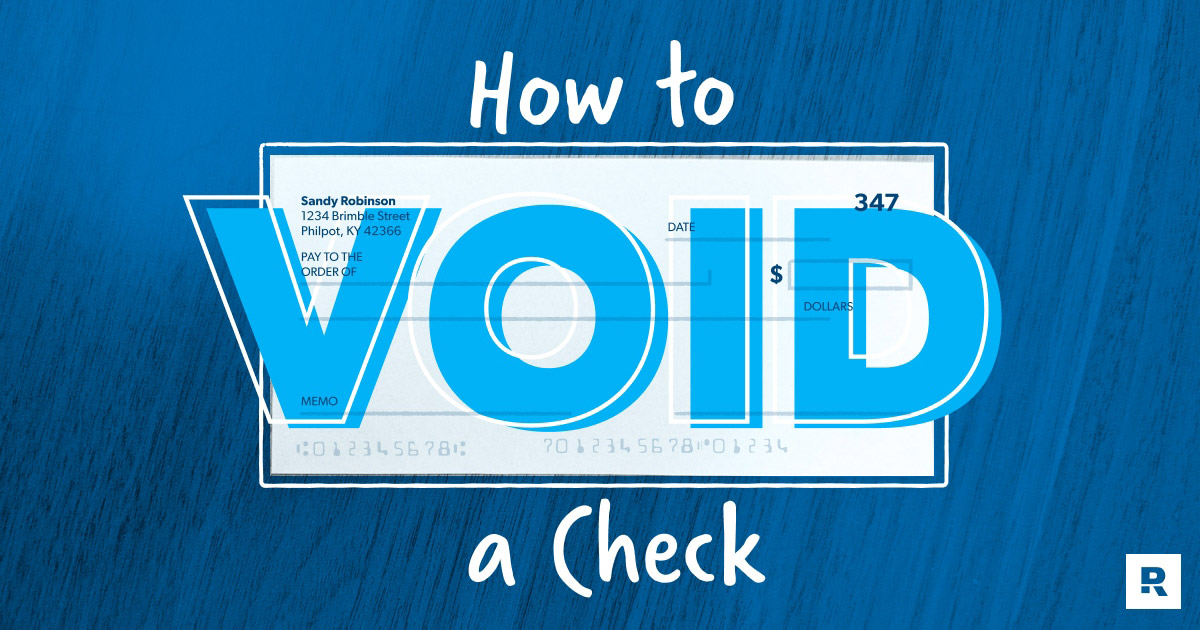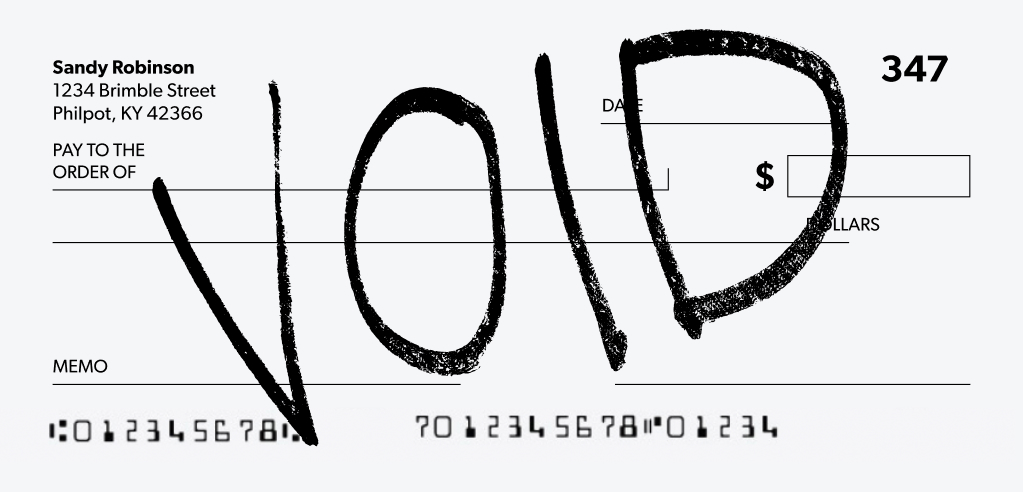How to Void a Check

Gone are the days of carrying a checkbook wherever you go. And with payment methods like debit cards, Venmo and Apple Pay taking center stage, the idea of writing a check seems old-fashioned. Seriously—when’s the last time you whipped out your checkbook to pay for groceries? Anybody?
With the rise of technology, people just aren’t writing checks to pay for things like they used to. In fact, U.S. shoppers only choose to write a check for about 7% of all their spending.1 But in an ironic twist, you actually still need to know how to void a check to set up a lot of digital transactions—like direct deposits and electronic bill payments. Voiding a check basically means you’re canceling it. Once you void a check, it can’t be used to make a payment or withdraw money from your account.
How to Void a Check in Three Steps
Luckily, learning how to void a check is super simple. Just follow these three steps:
Budget better with Ramsey+. Start a FREE trial today.
Step 1: Get a black or blue pen.
Step 2: Write “VOID” in large letters across the front of the check, big enough to cover all of the areas where you’d normally write in information. Or you can write “VOID” five separate times in each section (date line, payee line, signature line, amount line and amount box).
Step 3: Make a copy of the voided check for your records before you shred or give away the original.

Yep, it’s really that easy! Just make sure you don’t cover up the routing or account number on the check—those are important.
Reasons to Void a Check
There are lots of reasons why you may need to void a check, but here are four common scenarios where it might come in handy:
- Setting up direct deposit. Your employer will likely ask you to turn in a blank, voided check if you want your paychecks sent straight to your bank account. Direct deposit is great because it usually means you get paid faster.
- Setting up direct payments. On the flip side of direct deposit, if you’re an employer, you may need to void a check to set up electronic payments from your account to pay your employees or vendors.
- Starting regular bill or loan payments. It’s pretty common for a company to ask you to submit a blank, voided check to set up automatic bill payments for a mortgage or other type of consumer loan.
- Canceling a check you don’t want to be cashed. A check doesn’t have to be blank to be voided. Let’s say you wrote out a check and then realized you don’t have enough money in that account for it to be cashed. Or maybe you made a silly mistake like spelling a name wrong or adding an extra zero on the check amount. It happens! No matter the reason for needing to trash a check, it’s a good idea to void it first just to be safe—yes, even if you’re planning to rip it up.
How to Void a Check After Sending It to the Recipient
If you already sent the check that needs to be canceled, it’s obviously a little too late to write VOID across it. But not all hope is lost! There’s still a way to void a check after sending it. You’ll just have to act fast.
Your best bet? Call your bank and ask them to cancel the check through a stop payment order—that blocks the check from being cashed. You can also request a stop payment order through your online banking web portal. But remember, time is really of the essence here, so it may be better to void the check over the phone—you know, with a real human being.
Heads up: You’ll need to give your bank specific information about the check, like who it’s going to, when it was dated, and the amount it was for. That’s why it’s always a good idea to keep records of every check you write.
What to Do if You Don’t Have Checks
Don’t have a checkbook? Hey, that’s okay! There are a few things you can do if you need to submit a voided check but don’t have any checks.
- Ask your bank teller. No rocket science here! Most banks will print you a starter or sample check for free.
- Order checks online. Another easy option. If you think you would benefit from having checks, just head to your bank’s website and order yourself a checkbook.
- Use a deposit slip instead. A voided check is usually only needed for your routing and bank account number, but both of those numbers also live on your deposit slip.
- Do it online. If you’re setting up online payments, you may be able to get around voiding a check by entering your account and routing information online. Just make sure the site is secure.
There you have it—that’s everything you need to know on how to void a check. But listen, if you find yourself having to void checks out of fear that your bank account will overdraft, you need a better system in place for keeping track of your dollars.
While balancing a checkbook is a great way to see what happened to your money, planning a budget at the start of each month is the best way to stay in control of your money.

